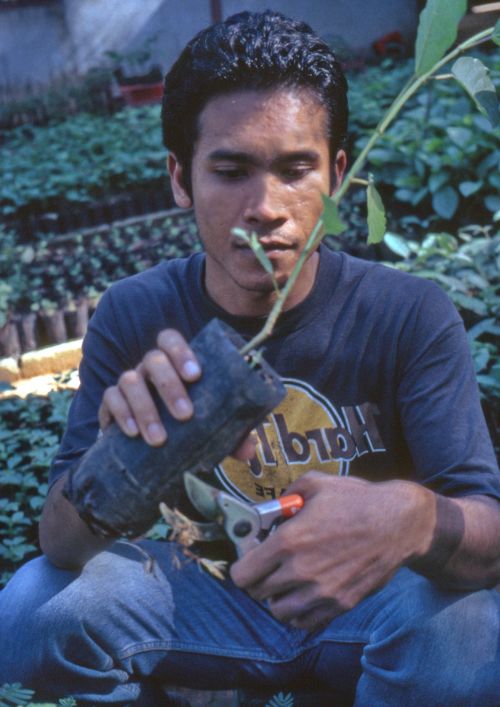The phenology of dioecious Ficus spp. tree species and its importance for forest restoration projects

FORRU Contributors
ABSTRACT: Ficus spp. are keystone tree species in tropical forest ecosystems and therefore, it is vital to include them in tree planting for forest restoration programs. However, lack of knowledge about critical aspects of their reproductive ecology currently limits their use, particularly optimal seed collection times and potential interruption of their highly specialized pollination mechanisms. Therefore, the reproductive phenology of seven dioecious Ficus species (Ficus auriculata, F. fulva, F. hispida, F. oligodon, F. semicordata, F. triloba and F. variegata) was studied at Doi Suthep–Pui National Park, Northern Thailand, in order to provide useful data to support forest restoration projects. The fig crops on male and female trees of each species were quantified monthly over a full annual cycle (March 2008–February 2009), using the canopy density method. At the population-level, most species produced figs all year round, but fig abundance varied seasonally. Maximum production of ripe figs by female (i.e., seed-producing) trees of most species occurred in the rainy season (May–August, except for F. triloba), while the main fig crop of male (i.e., wasp-producing) trees peaked 1–3 months before female trees. Four species F. auriculata, F. fulva, F. oligodon, and F. variegata presented critical bottleneck periods for wasp survival, especially during the rainy season, when the wasp-producing figs of male trees were least abundant. The study generated scientifically-based recommendations that will be useful for development of efficient forest restoration programs that maintain keystone resources in tropical forest ecosystems such as (i) optimum time and place for seed collection, (ii) recommendations on the propagation of dioecious fig species, (iii) optimum planting sites for each species and (iv) forest restoration plans to sustain the obligate ecological relationships between fig-trees and their pollinators.

